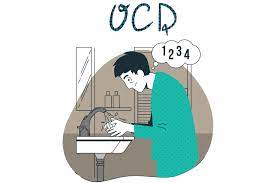If you have been struggling with BDD OCD, you are not alone. This is a very common disorder that can be difficult to manage. In this blog post, we will discuss what OCD and BDD are and how you can manage them. We will also provide some tips for living a healthy life with this disorder.
Contents
What Is BDD?
Body Dysmorphic Disorder or BDD is a type of OCD disorder, where individuals become obsessed with an imagined physical flaw. This obsessive thinking often results in compulsive behaviors such as excessive grooming, mirror-checking, and comparing one’s appearance to that of others. People with this disorder may experience significant distress and anxiety due to their perceived flaws. Here are some signs that you may be suffering from BDD:
- You spend a lot of time worrying about how you look.
- You feel self-conscious and ashamed of your appearance in public.
- You compare yourself to others or focus on perceived flaws.
- You engage in compulsive behaviors such as excessive grooming or mirror-checking.
What Is OCD?
Obsessive Compulsive Disorder (OCD) is an anxiety disorder characterized by persistent and intrusive thoughts, urges, and images. People with this disorder experience obsessions that drive them to engage in repetitive behaviors or rituals. It is estimated that about 2–3% of the population suffers from OCD.
How Is BDD Connected To OCD?

BDD is closely related to OCD, Here is a detailed explanation of the relationship between them.
Similarities
- BDD and OCD both disorders are characterized by obsessive thinking, intrusive thoughts, anxiety, and compulsive behavior.
- Both disorders are marked by excessive preoccupation with certain thoughts or behaviors and can be very disruptive to daily life.
- Compulsive behavior is another common symptom of both disorders and can range from excessive grooming to mirror-checking, skin picking, and compulsive comparison.
- Symmetry or perfection is also associated with both BDD and OCD, as individuals with these conditions often believe that certain aspects of their appearance must be “just right” to be acceptable or socially acceptable.
- Both conditions are treatable with Cognitive Behavioral Therapy (CBT) and other types of psychotherapy.
Differences
- The main difference between BDD and OCD is the focus of their obsession. People with BDD obsess over physical appearance, while people with OCD obsess over specific topics such as guilt, cleanliness, relationship, or symmetry.
- Another key distinction is that individuals with BDD are more likely to engage in avoidance behaviors, while individuals with OCD are more likely to engage in repetitive behaviors.
- Lastly, BDD is more likely to include checking and comparing one’s appearance with others, whereas OCD is more likely to involve counting or categorizing objects.
What Triggers BDD And OCD?

Now let’s look at what triggers OCD and BDD disorders.
The exact cause of BDD and OCD is still unknown, but it is believed to be related to genetics, brain chemistry, or environmental factors.
- Genetics: It is believed that certain genes may make individuals more vulnerable to developing BDD or OCD.
- Brain chemistry: Imbalances in certain brain chemicals, such as serotonin, can affect how the brain processes information and lead to the development of OCD or BDD. The OCD and low confidence are also triggered due to negative experiences in childhood with parents or peers.
- Environmental factors: Traumatic events, stressful life experiences, abuse or bullying, fear of rejection, and obsession with perfectionism. All of these can be potential triggers for BDD or OCD.
Is BDD Curable?
No, BDD is not curable, however, it can be managed with various treatments such as medication, psychotherapy, and lifestyle changes. It is a form of OCD and it is important to seek professional help if you think that you may be suffering from this disorder.
Can BDD Cause Panic Attacks?
Yes, BDD can cause panic attacks. People with BDD often experience intense fear and anxiety about their appearance, and this fear can lead to panic attacks. Panic attacks are characterized by the sudden onset of intense physical sensations such as rapid heartbeat, chest pain, dizziness, and difficulty breathing.
Can BDD Be Diagnosed?
Yes, BDD can be diagnosed by a mental health professional such as a psychiatrist, psychologist, or therapist. A diagnosis typically involves an evaluation of symptoms and medical history. The clinician may also use questionnaires and other diagnostic tools to help make the diagnosis. The DSM-5 is the diagnostic criteria for BDD.
The symptoms and behaviors associated with BDD can have a significant impact on daily life and should not be ignored.
Treatment Of OCD And BDD

BDD OCD can be treated using a variety of approaches some of them are:
Cognitive Behavioral Therapy
Cognitive Behavioral Therapy (CBT) is the most commonly used treatment for both BDD and OCD. CBT helps individuals recognize and challenge their negative thoughts and behaviors, helping them to learn healthier ways of thinking and behaving. It also helps to reduce symptoms of anxiety and depression.
Exposure and Response Prevention
ERP is another effective treatment for OCD and BDD. ERP involves gradually exposing yourself to the thing or situation that triggers your anxiety and teaching yourself how to resist engaging in compulsive behaviors such as mirror checking, skin picking, or reassurance seeking.
Imaginal exposure is also used to reduce the anxiety of BDD sufferers. Imaginal exposure involves spending time imagining in detail a situation that would usually cause distress and reframing it in a more positive way. The cognitive reconstructing technique is also used to help challenge negative and destructive thoughts.
Acceptance Commitment Therapy
Acceptance Commitment Therapy (ACT) is an evidence-based treatment for OCD and BDD. It combines acceptance and mindfulness with behavioral change strategies to help individuals embrace their difficulties and learn to cope with their anxiety in healthier ways. ACT teaches you how to step back from your thoughts, observe them without judgment, identify any underlying values or beliefs, and then take action on those values.
Family Therapy
Family therapy is also used to treat OCD and BDD. It helps family members understand the condition and learn how to support their loved ones more effectively. Family therapy can help increase communication, enhance problem-solving skills, reduce conflict, and improve relationships within the family.
Medications

Certain medications can be used to treat OCD and BDD, including selective serotonin reuptake inhibitors (SSRIs), tricyclic antidepressants, antipsychotics, and anticonvulsants. These medications are not a cure for either condition, but they can help reduce symptoms of compulsions, rumination, and anxiety. It is important to speak with your doctor about the potential risks and benefits of these medications before starting them.
Who Is Most Likely To Get BDD?
Anyone can develop BDD, though certain factors may make a person more likely to develop the disorder. Generally, teens and adolescents between the ages of 13 and 18 are most at risk of developing BDD.
Conclusion
BDD is not curable, but it can be managed with a combination of treatments such as medication, psychotherapy, and lifestyle changes. Cognitive Behavioral Therapy (CBT) and Exposure and Response Prevention (ERP) are the most commonly used treatments for BDD and OCD. Medications can also help reduce symptoms of compulsions, rumination, and anxiety. It is important to seek professional help if you think that you may have BDD or OCD as these conditions can have serious implications if left untreated.
Take care, and don’t forget that you are not alone! OCD is a mental health disorder characterized by obsessions and compulsions. If you have any queries regarding OCD treatment, ERP therapy experienced therapists at OCDMantra can help: Book a trial OCD therapy session


